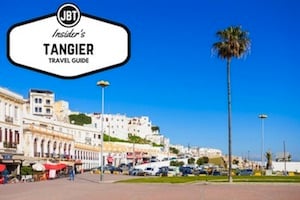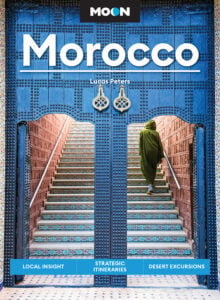 The Atlantic port city of Safi may not be considered the biggest tourist hub of Morocco, but isn’t it said that the best things are the least expected? In this case, absolutely. Pack your camera, put on walking shoes and get ready to discover all that the road less traveled by has to offer.
The Atlantic port city of Safi may not be considered the biggest tourist hub of Morocco, but isn’t it said that the best things are the least expected? In this case, absolutely. Pack your camera, put on walking shoes and get ready to discover all that the road less traveled by has to offer.
The city has two hearts—old and new Safi. The old city is the quaint, poorer division, great for strolling between ceramic shops that offer super cheap prices. The new city booms with life and a few attractions like seaside villas and a Portuguese cathedral. And the setting sun doesn’t mean sleep for this town. Safi stays awake, breathing with life, long after dark.
Safi lies about 150 kilometers northwest of Marrakech and halfway between the two ocean ports of Casablanca and Agadir. The Portuguese occupied Safi in the early 16th century for about 30 years. During their rule of the city they built a citadel surrounding a military enclave, still intact today, called the Kechla.
The Kechla is located about 500 meters off the coast. It was used as a prison until 1990, but today is open for visitors. Local ceramic producers bring their goods here for presentation. The finest traditional ceramics are displayed, such as molded, imprinted and carved pottery.
Just like the Kechla, the Dar Al Bahar is another fortress built by the Portuguese, except oceanfront and very worthy of a stop while visiting Safi. Be aware that there is a 10-dirham entrance fee to visit. Dar Al Bahar, meaning “the castle by the sea,” presents you with a panoramic view of the ocean and the medina market. Dar Al Bahar also offers rooms for visitors to stay overnight, decorated in a way that reflects the early 16th-century style in which it was built—simplistic.
Coastal castles aside, this seaport still offers more for you, like its well-known production and sale of ceramic goods. The Collines des Potiers—the potters’ quarter—rests just outside of Safi’s walls in the rolling hills above the city. This elevated quarter will charm you with its ancient wood-burning kilns and womb-like chimneys dotting the landscape. Potters don’t just make ceramic, though. They also hand-make crafts like tiles and mosaics.
For the main souks and places to purchase common goods, wander along the main street in the medina, Rue du Socco. While you’re shopping, catch a glimpse of the Cathedrale Portugaise, the Portuguese Cathedral. Although the building itself remains incomplete with only a choir galley and vaulted hall still standing, the Cathedral enchants its visitors. You’ll want to have the camera out for this one.
Ambling off the beaten path has its rewards. Paying a trip to Safi will not only give you the chance to buy some local handmade ceramic goods, but it will leave you with a better understanding of Moroccan culture and history (Learn more about Safi and other destinations on our blog about Morocco.). Not to mention photographs and memories to last a lifetime.
Written by Amanda Sandlin.
Photo by Rui Ornelas.









I understand that Safi is the port from which the Norwegian explorer/author Thor Heyerdahl sailed in the ’50’s. ’60’s? In his papyrus raft the Ra. Do you have any information about this? Thanks.
Hi, Nanette!
According to the official Norway website in the US (the Royal Norwegian Embassy), the Ra was named after an Egyptian sun god. Heyerdahl launched it from Safi in 1969 to prove that the papyrus vessels of the ancient Egyptians could cross the Atlantic successfully.
After about 5,000 kilometers, the Ra started to fail as a vessel, and the journey had to be aborted.
If you’d like to read more information: http://www.norway.org/aboutnorway/history/expolorers/heyerdahl/
Thanks for your interest, Nanette! Hope this helped.
-Amanda